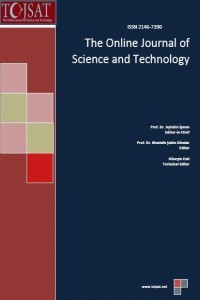Comfort and structural (FEA) analysis on light weighted car seat design optimized with EPP material
Comfort and structural (FEA) analysis on light weighted car seat design optimized with EPP material
Weight reduction on car seats EPP material, Comparative comfort and strength analyses, FEA method,
___
- Republic of Turkey, Ministry Of Science, Industry And Technology (2012). Automotive industry report, Ankara, Turkey.
- Grujicic, M. Pandurangan, B. Arakere, G. Bell, W.C. He, T, Xie, X. (2009). “Seat-cushion and soft-tissue material modeling and a finite element investigation of the seating comfort for passenger-vehicle occupants”, Materials and Design 30, 4273–4285
- Siefert, A. Pankoke, S. Wölfel, H.-P.(2008).”Virtual optimisation of car passenger seats: Simulation of static and dynamic effects on drivers’ seating comfort”, Int. J. Industrial Ergonomics 38, 410–424
- National Highway Traffic Safety Administration (NHTSA) (2012). Final Rule for CAFE Standards for Model Years 2017 and Beyond , United States of America.
- European Parliament and of the Council Regulation (2009). Regulation (EC) No 443/2009 of setting emission performance standards for new passenger cars as part of the Community's integrated approach to reduce CO2 emissions from light-duty vehicles Text with EEA relevance, European Union.
- Eureka Project-Lightweight Seatbacks (2013),4920 Lıse, Styron Netherlands B.V. www.eurokanetwork.org/project, [access Oct. 2013]
- Arpro physical properties (2013), http://www.arpro.com/tech-docs/europe, [access Oct. 2013]
- ISSN: 2146-7390
- Başlangıç: 2011
- Yayıncı: The association of science, education and technology
Toxic heavy metal chromium remediation by processed low cost adsorbentGreen coconut shell
Seema Tharannum, V Krishna Murthy, V Nandini, P.T Shruthi
Mahmoud Fathy El-Sharkawy, Gehan Raafat Zaki
Simple Harmonic Motion Experiment Using Force Sensor: Low Cost and Single Setup
Siti Nurul Khotimah, Luman Haris, Sparisoma Viridi, Widayani Khairurrijal
Enock A. Duodu, J. D. Owusu-Sekyere
Fitting The Cogeneration Plant To Energy Needs
Comfort and structural (FEA) analysis on light weighted car seat design optimized with EPP material
